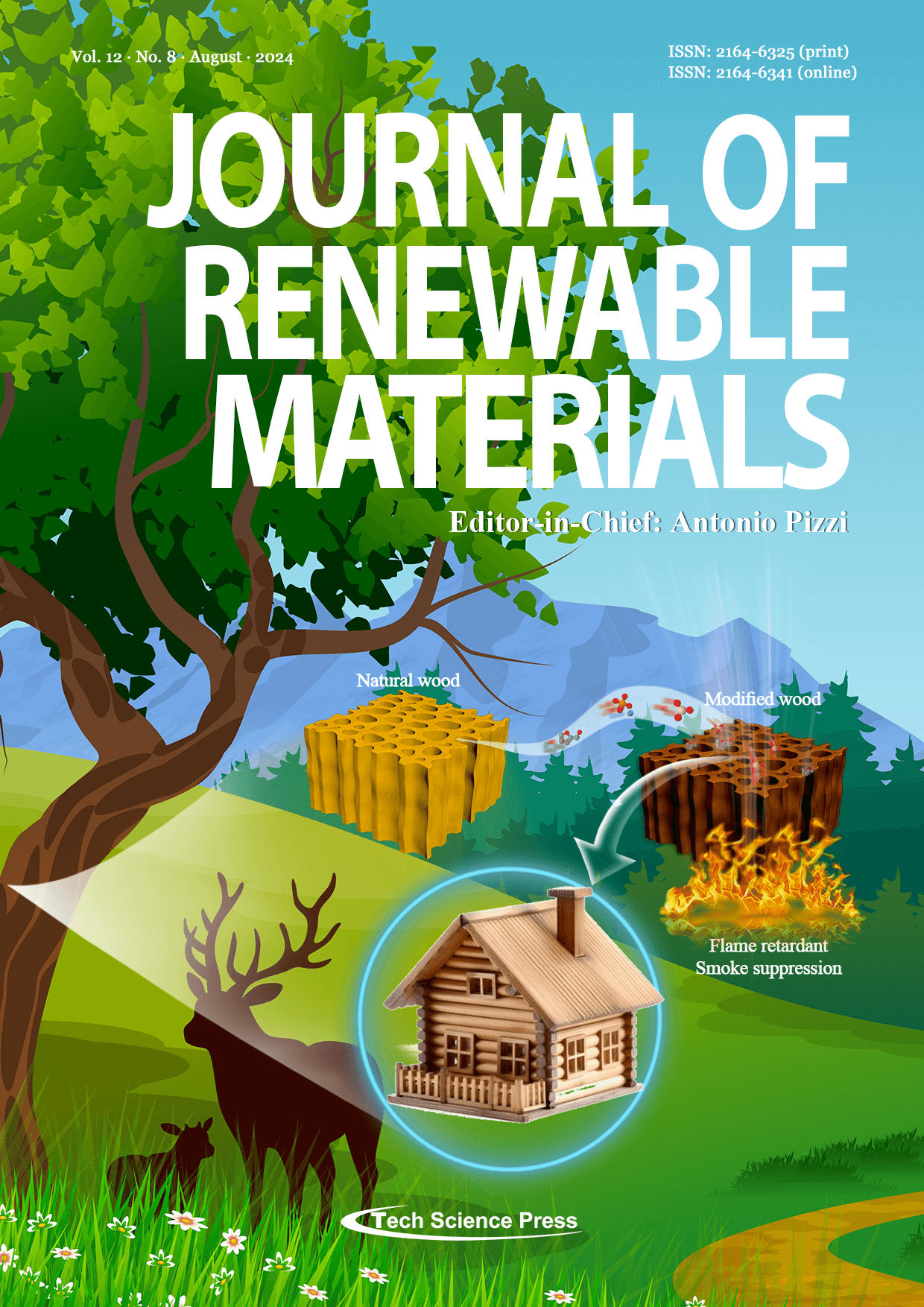Isolation of Microcrystalline Cellulose from Wood and Fabrication of Polylactic Acid (PLA) Based Green Biocomposites
Selwin Maria Sekar1, Rajini Nagarajan1,*, Ponsuriyaprakash Selvakumar2, Ismail Sikiru Oluwarotimi3, Kumar Krishnan4, Faruq Mohammad5, Mohammed Rafi Shaik5, Nadir Ayrilmis6,*
Journal of Renewable Materials, Vol.12, No.8, pp. 1455-1474, 2024, DOI:10.32604/jrm.2024.052952
- 06 September 2024
(This article belongs to the Special Issue: Environmentally Friendly Wood-Based Composites Based on Sustainable Technologies and Renewable Materials)
Abstract An innovative microcrystalline cellulose (MCC) natural fibre powder-reinforced PLA biocomposite was investigated using the hand lay-up technique. The polymer matrix composite (PMC) samples were prepared by varying the weight percentages (wt.%) of both PLA matrix and MCC reinforcement: pure PLA/100:0, 90:10, 80:20, 70:30, 60:40 and 50:50 wt.%, respectively. From the results obtained, MCC powder, with its impressive aspect ratio, proved to be an ideal reinforcement for the PLA, exhibiting exceptional mechanical properties. It was evident that the 80:20 wt.% biocomposite sample exhibited the maximum improvement in the tensile, flexural, notched impact, compressive strength and hardness… More >
